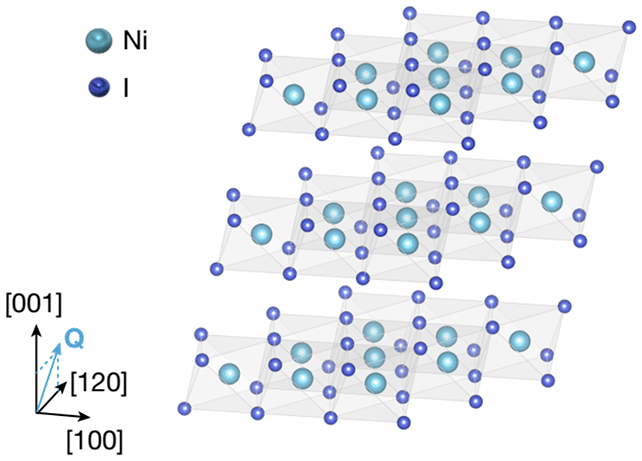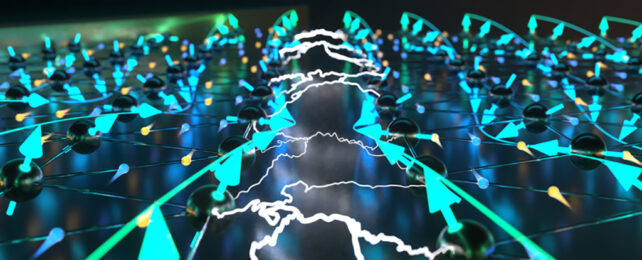Scientists have observed yet another type of magnetism for the first time within a lab-made crystal, promising to drive improvements in efficiency and speed in electronics as well as open new areas to explore in fundamental physics.
Building on earlier theoretical predictions, the international team of researchers behind the discovery detected what's known as p-wave magnetism in nickel iodide (NiI2), a two dimensional crystal with the precise properties needed for this type of magnetism to emerge.
"It was a completely new idea at the time, and we decided to test it experimentally because we realized nickel iodide was a good candidate to show this kind of p-wave magnet effect," says MIT physicist Riccardo Comin.
In your typical magnet, electrons all tend to share an alignment of a property known as spin. In effect this means their tiny compasses all point in the same direction, building their magnetic fields.
In materials known as antiferromagnets, these spins align to cancel out perfectly at the macro scale.
P-wave magnetism combines conventional ferromagnetism with antiferromagnetism in a unique way that gives rise to mirrored spirals of various spin states that cancel the magnetism on a large scale. Ultra-thin flakes of nickel iodide produced in a high-temperature furnace allowed for the electrons to spin in different directions based on the fields in their immediate surrounds.
By shining polarized light (which oscillates like a corkscrew rather than rise and fall in the more conventional wave-like pattern) on their material, the researchers revealed spiral-like configurations among the electrons' spins.
As well as observing the novel form of magnetism, the researchers were also able to control it, adjusting its spin state and its properties using a small electric field.
"We showed that this new form of magnetism can be manipulated electrically," says physicist Qian Song, from the Massachusetts Institute of Technology (MIT).
"This breakthrough paves the way for a new class of ultrafast, compact, energy-efficient, and nonvolatile magnetic memory devices."

The end result is electron spins that can theoretically be switched in a complex, controllable way, allowing for potential uses in the emerging field of spintronics; a means of using electron spins to store memory, compute, or move energy.
It's another demonstration of the possibilities of unconventional types of magnetism, beyond the standard compass needles and speaker systems – potentially leading to whole new classes of materials.
Practical applications of this technology are still some way off, but ultimately this could lead to memory chips that are denser, faster, and more efficient – with energy use continuing to be a concern with the rise of artificial intelligence.
Right now, a system like this needs careful calibration and special lab conditions, but there's plenty of potential here for the future: electronics where electron spins are manipulated rather than electric charges, making systems more efficient.
"We just need a small electric field to control this magnetic switching," says Song. "P-wave magnets could save five orders of magnitude of energy. Which is huge."
The research has been published in Nature.
